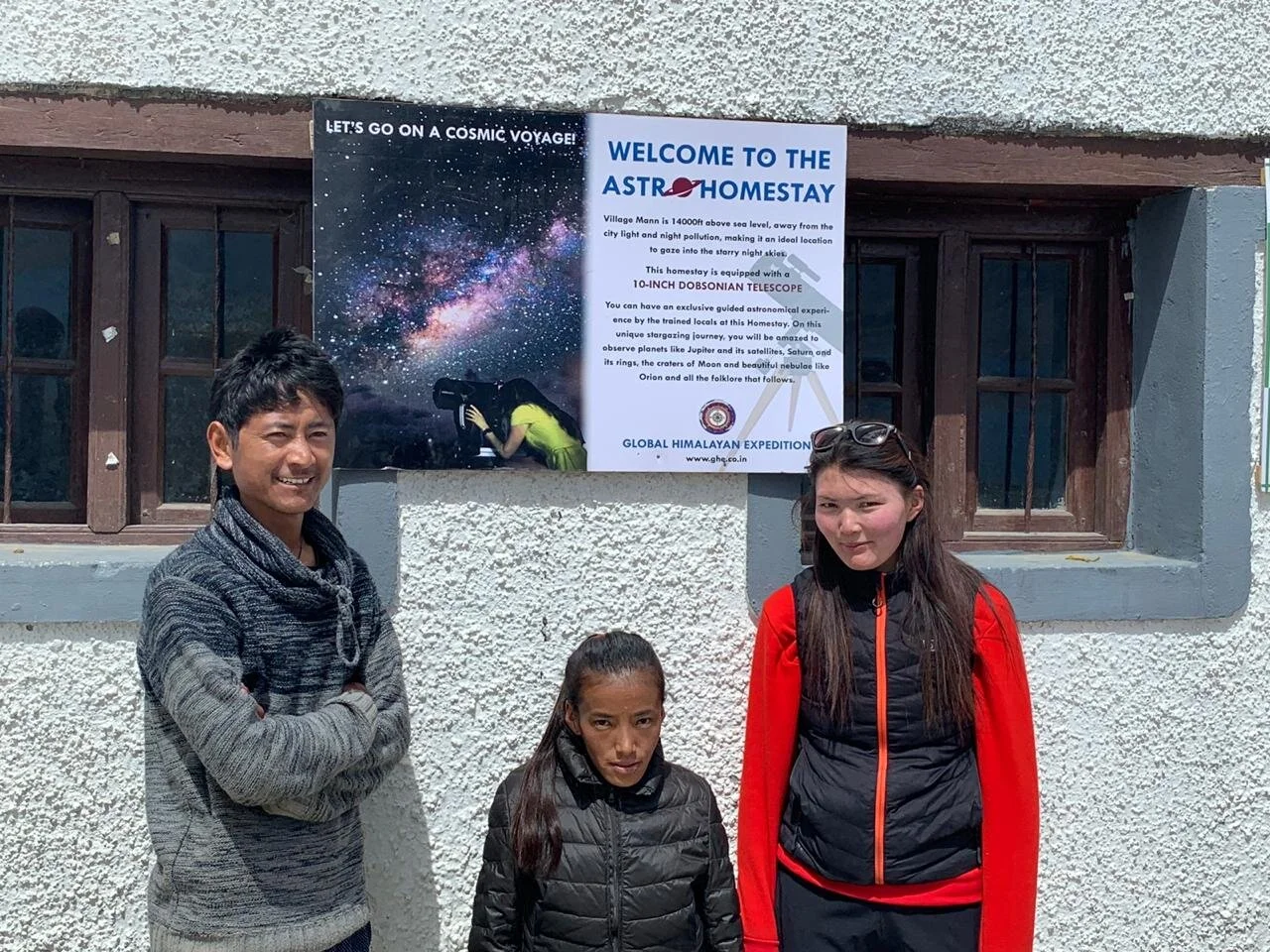Astrostays: Creating sustainable livelihoods through Community-led Astro-Tourism
Let’s go on a cosmic journey… to the Himalayas.
As nature-based tourism emerges strongly in a post-COVID world, astro-tourism presents immense opportunities to create positive social, economic and conservation benefits. Astro-tourism is a form of experiential tourism that encompasses travelling for astronomy related experiences – ranging from night-time star gazing in locations with access to dark skies, observatories or special events like solar eclipse or meteor showers.
By the very nature of astro-tourism, the best vantage points are usually located in remote and rural areas. However, the communities residing in these remote areas have remained significantly absent from the tourism value chain.
Despite seeing a strong growth in recent years, the socio-economic impact of astro-tourism on these lesser-known, remote areas has been very limited. In 2018, Global Himalayan Expedition (GHE) collaborated with the International Astronomical Union – Office of Astronomy for Development (IAU – OAD) to develop a community-led Astro-tourism model (called Astrostays) with the objective of stimulating sustainable tourism in lesser-known remote communities and creating new channels of revenue generation for the local communities.
Astrostays are owned and operated by the community, who benefit directly from the revenue gained. With the community at the centre, the model goes beyond traditional astronomy-based offerings. Visitors can expect a holistic program involving cultural heritage and exchange, local art & craft, indigenous folklore, sustainable living, eco-tourism, and more.
An astrostay lodge
Astro-Tourism Post COVID
Travellers are now looking to move away from tourism hotspots and built-up regions and explore lesser-known off-beat destinations; and astro-tourism is one of the most authentic and low-impact forms of nature-based tourism. Dark skies don’t require any maintenance and can be enjoyed with the naked eye.
High-powered telescopes are available as part of your experience
Astrostays in Himalayas
The first astrostay was setup in Ladakh, India, in the village of Maan (4,250 metres elevation), near the world-famous lake Pangong Lake.
30 women were selected from 15 different villages and trained, not only on the basics of astronomy and the know how to operate telescopes, but also in hospitality and gastronomy. A team of five trained community members from Maan now use their skills to conduct night sky viewing sessions for incoming tourists using a 10-inch telescope on a tracking mount.
There are now five astrostays operational in Ladakh. In the four months of operations in 2019, over 810 travellers have experienced these astrostays, generating an additional income of around US$1410 for the community and local entrepreneurs. Conducting night sky watching sessions and homestays for the incoming tourists has enabled communities to create new channels for generating revenue, while along the way fostering sustainable progress in the economy, gender equality, as well as scientific temperament in the region.
Astrostays not only engage travellers in local culture, stories and heritage of the indigenous communities but also provide them with community-run accommodation such as a homestay, which in turn generates direct benefits for the rural populace. The inflow of money into the village economy elevates everyone equally, and many women, in particular, are now more confident and handle family finances.
Astrostays can boost local economies
A place to relax and unwind after your cosmic journey
Impact of Astrostays:
1.) Empower local communities in developing economic diversity: The core objective of this intervention is to facilitate integrated socio-economic development by stimulating sustainable nature-based tourism in lesser-known remote communities and create new channels of revenue generation.
2.) Cultural conservation: By far the most important pillar of the astrostays model is the preservation of local heritage and culture. The night sky has played a key role in various facets of development of civilization that includes orientation and navigation, agriculture, calendars, cultural travel, and celebrations.
3.) Increase visitation and boost tourism spend: Astro-tourism necessitates at least one or more overnight stays, which helps to generate more revenue and visitor spend. Visitors can travel even in the winter and shoulder* seasons, thereby spreading the impact of tourism year-round.
Venture high into the Himalayas to stargaze
* Shoulder seasons refer to the seasons between peak season and low season. For example, in some destinations peak season is summer and low season is winter; shoulder season could be autumn and/or spring.
Written by Sonal Asgotraa, Global Himalayan Expedition.









